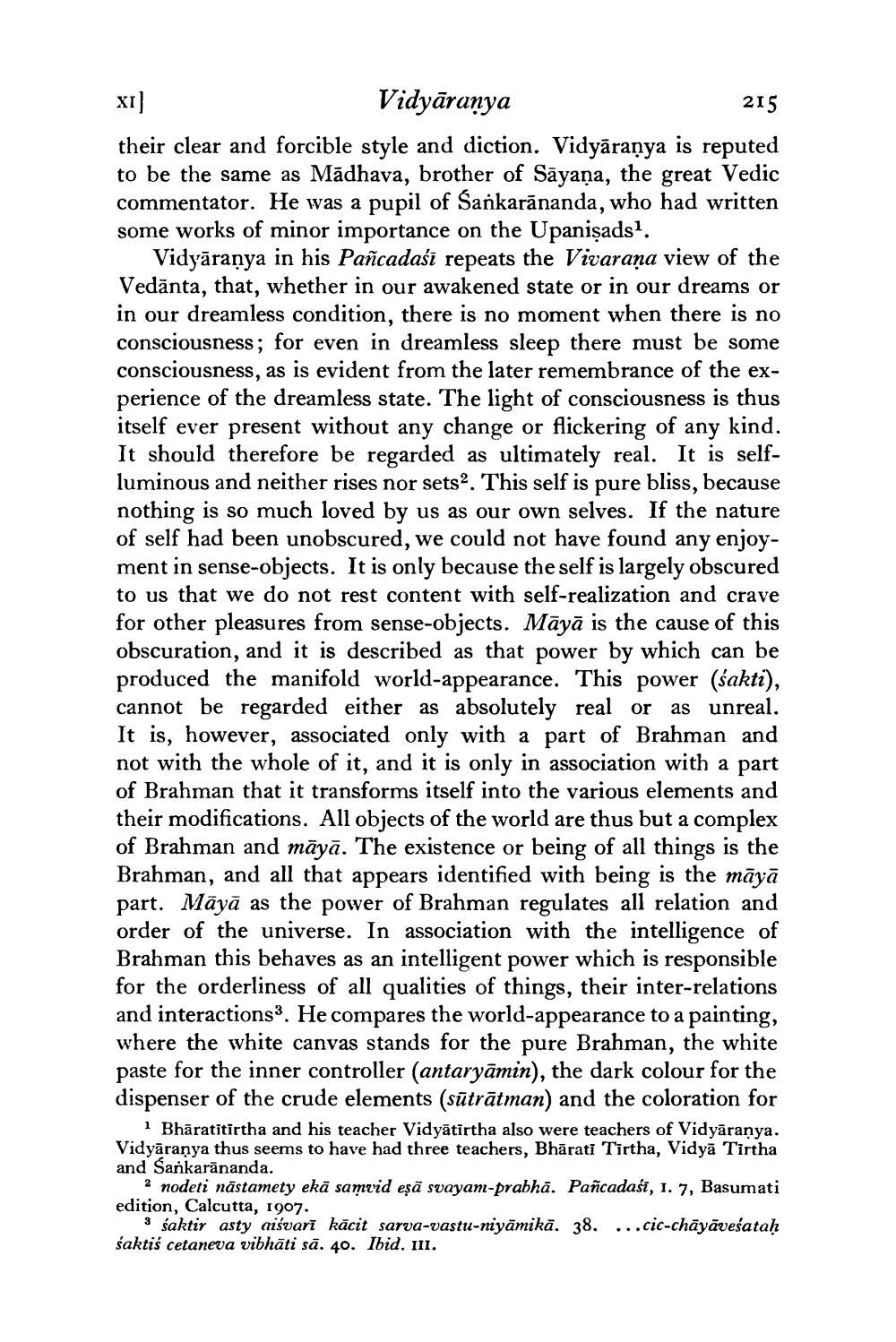________________
XI) Vidyāranya
215 their clear and forcible style and diction. Vidyāraṇya is reputed to be the same as Mādhava, brother of Sāyaṇa, the great Vedic commentator. He was a pupil of Sankarānanda, who had written some works of minor importance on the Upanişads?
Vidyāraṇya in his Pañcadaśī repeats the Vivaraņa view of the Vedānta, that, whether in our awakened state or in our dreams or in our dreamless condition, there is no moment when there is no consciousness; for even in dreamless sleep there must be some consciousness, as is evident from the later remembrance of the experience of the dreamless state. The light of consciousness is thus itself ever present without any change or flickering of any kind. It should therefore be regarded as ultimately real. It is selfluminous and neither rises nor sets. This self is pure bliss, because nothing is so much loved by us as our own selves. If the nature of self had been unobscured, we could not have found any enjoyment in sense-objects. It is only because the self is largely obscured to us that we do not rest content with self-realization and crave for other pleasures from sense-objects. Māyā is the cause of this obscuration, and it is described as that power by which can be produced the manifold world-appearance. This power (sakti), cannot be regarded either as absolutely real or as unreal. It is, however, associated only with a part of Brahman and not with the whole of it, and it is only in association with a part of Brahman that it transforms itself into the various elements and their modifications. All objects of the world are thus but a complex of Brahman and māyā. The existence or being of all things is the Brahman, and all that appears identified with being is the māyā part. Māyā as the power of Brahman regulates all relation and order of the universe. In association with the intelligence of Brahman this behaves as an intelligent power which is responsible for the orderliness of all qualities of things, their inter-relations and interactions. He compares the world-appearance to a painting, where the white canvas stands for the pure Brahman, the white paste for the inner controller (antaryāmin), the dark colour for the dispenser of the crude elements (sūtrātman) and the coloration for
Bhāratītirtha and his teacher Vidyātirtha also were teachers of Vidyāranya. Vidyāranya thus seems to have had three teachers, Bhārati Tirtha, Vidyā Tirtha and Sankarānanda.
2 nodeti nāstamety ekā samvid eşā svayam-prabhā. Pañcadašī, 1. 7, Basumati edition, Calcutta, 1907.
3 saktir asty aiśvarī kācit sarva-vastu-niyāmikā. 38. ...cic-chāyāveśatah saktiś cetaneva vibhāti sā. 40. Ibid. III.




